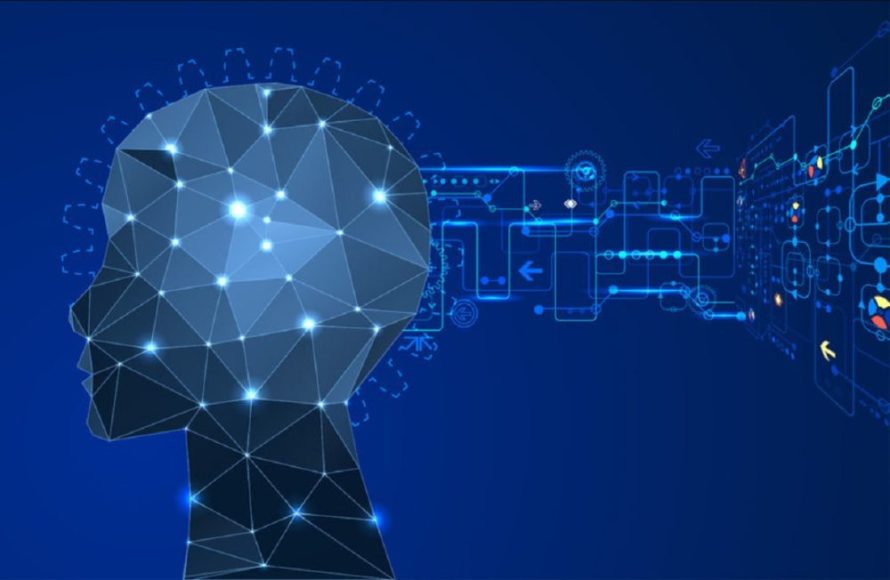Artificial General Intelligence (AGI) is the concept of creating highly autonomous systems that possess cognitive abilities at a human level or beyond. While significant progress has been made in the field of artificial intelligence (AI), AGI remains a formidable challenge.
This article delves into the current limitations of AGI and explores the potential future possibilities, highlighting the key areas of research that could lead to its realization.
Current Limitations of AGI
Despite remarkable advancements in artificial intelligence (AI), Artificial General Intelligence (AGI) still faces significant limitations that pose challenges to its realization as a highly autonomous system with human-level cognitive abilities.
While AGI holds tremendous potential, there are critical hurdles to overcome. The following paragraphs will delve into the current limitations of AGI, exploring its struggles with contextual understanding, limited generalization, data dependence, and ethical concerns.
Understanding these limitations is crucial in comprehending the obstacles that must be addressed to pave the way for the future development and deployment of AGI.
Lack of Contextual Understanding
One of the significant limitations of Artificial General Intelligence (AGI) is its lack of contextual understanding, which hinders its ability to effectively comprehend and respond to human communication. Despite advancements in natural language processing and machine learning, AGI systems struggle to grasp the subtle nuances, complexities, and context-dependent aspects of human language.
Understanding context is vital for AGI systems to accurately interpret and respond to human communication in real-world scenarios. However, contextual understanding goes beyond mere word-by-word analysis. It requires the ability to comprehend the underlying meaning, cultural references, emotions, and even sarcasm present in human language. These contextual cues play a crucial role in effective communication and decision-making.
Additionally, AGI systems often lack the ability to understand and interpret non-verbal cues, such as facial expressions, tone of voice, and body language, which are essential for understanding human communication fully.
These non-verbal cues contribute significantly to conveying emotions, intentions, and the overall meaning behind a message. Without this contextual understanding, AGI systems may misinterpret or overlook critical aspects of human communication, leading to ineffective or inappropriate responses.
The complexity of language itself poses another challenge. Human communication involves intricate structures, metaphors, idiomatic expressions, and cultural references that are deeply ingrained in our everyday conversations.
AGI systems struggle to comprehend and interpret these complex linguistic constructs accurately. For example, understanding the figurative meaning behind phrases like “break a leg” or interpreting metaphors requires a deeper level of contextual understanding that current AGI systems often lack.
Overcoming the limitation of contextual understanding in AGI requires advancements in natural language processing, machine learning algorithms, and semantic understanding.
Researchers are exploring techniques such as deep learning, contextual embeddings, and attention mechanisms to improve AGI’s ability to comprehend context and extract meaning from human communication accurately.
Limited Generalization
One of the significant limitations of Artificial General Intelligence (AGI) is its limited generalization capabilities. AGI systems often struggle to apply their knowledge and skills to new and unfamiliar situations, despite demonstrating exceptional performance in specific tasks or domains they have been extensively trained on.
The challenge lies in the inability of AGI systems to effectively transfer their learned knowledge and expertise to tasks or domains that differ significantly from their training data. While AGI systems heavily rely on vast amounts of labeled training data to learn patterns and make predictions, they often become overly specialized, optimizing their performance for the specific data they were trained on.
As a result, when faced with new tasks or domains, AGI systems may fail to generalize their knowledge effectively. They may have difficulty identifying the relevant similarities and differences between the learned knowledge and the new situation, preventing them from applying their expertise in a flexible and adaptive manner.
Data Dependence
A significant limitation of Artificial General Intelligence (AGI) is its heavy reliance on large amounts of labeled training data. AGI systems require extensive data sets to learn patterns, make predictions, and acquire the knowledge necessary to perform specific tasks. However, this dependence on vast amounts of data poses several challenges and limitations.
Limited Data Availability:
In real-world scenarios, there are instances where labeled training data may be scarce or unavailable. AGI systems often struggle to generalize their knowledge and make accurate predictions when faced with situations for which they have limited or no training data.
This limitation hampers the adaptability and versatility of AGI systems, as they may encounter new or unforeseen circumstances where acquiring labeled data is challenging.
Dynamic Environments:
AGI systems need to operate in dynamic and ever-changing environments. However, relying solely on pre-existing labeled data makes it challenging for them to adapt quickly to changing conditions.
Real-world scenarios often involve evolving circumstances, new variables, or shifting patterns, requiring AGI systems to make informed decisions with incomplete or ambiguous information. Overcoming data dependence is crucial to enable AGI systems to learn and adapt in dynamic environments effectively.
Privacy and Security Concerns:
The availability of large-scale labeled training data raises concerns about privacy and security. AGI systems trained on personal or sensitive data may pose risks if they are not properly handled or secured.
The reliance on massive data sets can exacerbate privacy concerns, as it may involve collecting and analyzing extensive amounts of personal information. Developing methods to address data dependence while respecting privacy rights is essential for the responsible development and deployment of AGI.
Addressing the limitation of data dependence in AGI involves exploring alternative learning paradigms and techniques that mitigate the need for extensive labeled data. Here are a few potential avenues of research:
Unsupervised and Self-supervised Learning:
These learning approaches aim to enable AGI systems to learn from unlabeled or partially labeled data. Unsupervised learning focuses on extracting meaningful patterns and structures from raw data without explicit labels, while self-supervised learning leverages the inherent structure or information within the data itself to create pseudo-labels for training.
By reducing the reliance on labeled data, AGI systems can acquire knowledge and make predictions in scenarios where labeled data is limited.
Active Learning:
Active learning is a technique where AGI systems interactively query humans or other information sources to obtain labeled data for training.
This approach allows AGI systems to actively seek the most informative and relevant data points to improve their learning process. By strategically selecting data samples for labeling, active learning reduces the overall data dependency and optimizes the use of available resources.
Simulation and Virtual Environments:
Simulated environments provide a controlled and scalable platform for training AGI systems. By leveraging virtual environments, AGI systems can generate and collect diverse and labeled data, enabling them to learn and generalize across various scenarios.
Simulations can simulate different conditions, introduce variations, and generate labeled data in a controlled manner, reducing the need for real-world data and easing the data dependence challenge.
Addressing data dependence in AGI is essential to enable these systems to learn and adapt effectively in real-world scenarios where data availability may be limited or dynamic. By exploring alternative learning approaches, AGI systems can become more robust, versatile, and capable of making informed decisions with incomplete or ambiguous information.
Reducing data dependence will also help address privacy concerns and ensure responsible and ethical development and deployment of AGI systems.
Ethical Concerns
The development and deployment of Artificial General Intelligence (AGI) raise profound ethical concerns that must be addressed to ensure the responsible and beneficial use of this technology. As AGI systems become increasingly sophisticated and autonomous, several key ethical challenges emerge:
Transparency and Explainability:
AGI systems often operate as black boxes, making it challenging to understand how they arrive at their decisions or predictions.
Lack of transparency and explainability raises concerns about accountability and fairness. Users and stakeholders should have access to information about the decision-making processes of AGI systems, enabling them to understand and evaluate the system’s actions and outcomes.
Bias and Fairness:
AGI systems can inadvertently perpetuate biases present in the data they are trained on. If training data contains societal biases, discrimination, or unfairness, AGI systems may unknowingly learn and amplify these biases in their decision-making processes.
Ensuring fairness and mitigating bias in AGI systems is crucial to prevent the reinforcement of societal inequalities and to foster equitable and unbiased outcomes.
Unintended Consequences:
AGI systems can exhibit unexpected behavior or generate outcomes that may have unintended consequences. In complex environments, the interplay between AGI systems and the real world can lead to unforeseen outcomes, ethical dilemmas, or harm to individuals or society.
It is important to anticipate and mitigate potential risks and unintended consequences, emphasizing the need for careful evaluation and risk assessment during the development and deployment of AGI.
Privacy and Data Protection:
AGI systems often require access to large amounts of data, which may include personal or sensitive information. Safeguarding privacy and protecting individuals’ data rights is essential when handling such data.
AGI systems must adhere to strict data protection regulations and ensure the secure and ethical handling of personal information to maintain public trust and confidence.
Long-term Implications:
AGI systems have the potential to bring about significant societal and economic changes. These changes may disrupt existing job markets, impact individual livelihoods, and reshape social structures.
Careful consideration must be given to the long-term implications of AGI and the potential impact on various aspects of society, including employment, education, and economic inequality.
Addressing the ethical concerns surrounding AGI requires a multidisciplinary approach involving researchers, policymakers, ethicists, and stakeholders. Here are some avenues of research and policy considerations:
Ethical Guidelines and Governance:
Establishing comprehensive ethical guidelines and governance frameworks is crucial to guide the development, deployment, and use of AGI systems.
These guidelines should address transparency, explainability, fairness, bias mitigation, accountability, and the prevention of unintended consequences.
Collaborative efforts are necessary to create global standards and ensure responsible and ethical practices across the AGI community.
Ethical Design and Development:
Ethical considerations should be integrated into the design and development process of AGI systems from the outset. Ethical design principles should promote transparency, fairness, and accountability, and ensure that AGI systems align with human values and societal well-being.
Additionally, incorporating interdisciplinary perspectives, including ethics, social sciences, and humanities, can provide valuable insights into the potential ethical implications of AGI.
Public Engagement and Education:
Engaging the public in discussions about AGI and its ethical implications is essential. Public input and involvement in decision-making processes can help shape the development and deployment of AGI systems in a way that reflects societal values and priorities.
Moreover, promoting public education and awareness about AGI and its ethical considerations can facilitate informed discussions and foster responsible adoption.
Regulation and Legal Frameworks:
Policymakers and regulatory bodies should establish clear legal frameworks and standards to address the ethical concerns associated with AGI.
These frameworks should encompass areas such as privacy, fairness, accountability, and liability. Regulation should strike a balance between fostering innovation and ensuring the protection of individuals’ rights and societal well-being.
Addressing the ethical concerns of AGI is crucial to foster trust, fairness, and accountability in its development and deployment.
By proactively considering these ethical challenges, researchers, policymakers, and stakeholders can work together to create a framework that promotes responsible and beneficial use of AGI, while safeguarding human values and societal welfare.
Future Possibilities of AGI
Although Artificial General Intelligence (AGI) currently faces substantial limitations, there are promising avenues of research that hold the potential to overcome these challenges and unlock its full capabilities.
The future of AGI lies in harnessing advancements in natural language processing, transfer learning, human-like learning, ethical frameworks, and collaborative approaches between humans and AGI systems.
By addressing these areas, AGI could achieve enhanced contextual understanding, improved generalization across domains, reduced data dependence, and the establishment of robust ethical frameworks.
These future possibilities pave the way for AGI to transform various aspects of our society, revolutionizing industries, driving scientific discoveries, and fostering symbiotic interactions between humans and intelligent systems.
Enhanced Contextual Understanding
Improving contextual understanding is a key area of development for Artificial General Intelligence (AGI) systems. AGI’s ability to comprehend and interpret human language in various contexts is essential for effective communication, decision-making, and problem-solving.
Here are some approaches and advancements that can contribute to enhanced contextual understanding in AGI:
Natural Language Processing (NLP) Advancements:
NLP techniques have made significant strides in recent years, enabling AGI systems to better grasp the nuances of human language.
Advancements in areas such as semantic analysis, sentiment analysis, and entity recognition have enhanced AGI’s ability to extract meaning, understand emotions, and identify important entities in textual data.
These improvements help AGI systems comprehend the context in which language is used and make more accurate interpretations.
Knowledge Graphs and Semantic Networks:
Integrating knowledge graphs and semantic networks can enhance AGI’s contextual understanding. These structures capture relationships, associations, and semantic connections between concepts, enabling AGI systems to build a rich representation of knowledge and contextual information.
By leveraging these resources, AGI systems can access a broader understanding of the world, comprehend complex concepts, and make informed interpretations based on contextual information.
Common-Sense Reasoning:
Common-sense reasoning is a fundamental aspect of human intelligence that enables us to make logical inferences and understand implicit information. Enhancing AGI systems’ ability to reason based on common-sense knowledge can significantly improve their contextual understanding.
Efforts are underway to develop large-scale common-sense knowledge bases and integrate them into AGI systems, enabling them to reason and interpret information in a manner similar to human cognition.
Contextual Embeddings and Attention Mechanisms:
Contextual embeddings and attention mechanisms have revolutionized the field of natural language understanding. Contextual embeddings capture the meaning and context of words based on their surrounding context, enabling AGI systems to comprehend language at a deeper level.
Attention mechanisms allow AGI systems to focus on relevant parts of a sentence or document, improving their understanding of context-dependent information. These techniques have shown promise in enhancing AGI’s ability to interpret and respond to human language in diverse contexts.
Multimodal Learning:
Contextual understanding can be further enhanced by incorporating multimodal learning, which involves processing and integrating information from multiple modalities such as text, images, and audio.
By analyzing and interpreting information from different modalities, AGI systems can gain a more comprehensive understanding of context.
For example, combining visual cues with textual information can help AGI systems better comprehend the context of an image or video, leading to more accurate interpretations.
Continual Learning and Adaptation:
AGI systems that can continually learn and adapt to new information and contexts have an advantage in enhancing contextual understanding.
By incorporating mechanisms for lifelong learning, AGI systems can update their knowledge base, refine their understanding, and adapt their interpretations based on new experiences and information.
Continual learning allows AGI systems to improve their contextual understanding over time and stay up-to-date with evolving contexts and language usage.
Enhancing contextual understanding in AGI systems is a complex and ongoing research endeavor. By combining advancements in NLP, knowledge representation, common-sense reasoning, attention mechanisms, multimodal learning, and lifelong learning, AGI systems can achieve a deeper understanding of human language and context.
These advancements pave the way for AGI to engage in more sophisticated and natural interactions, enabling applications in areas such as customer service, information retrieval, language translation, and intelligent decision support systems.
Transfer Learning and Generalization
Transfer learning and generalization are crucial concepts in the development of Artificial General Intelligence (AGI) systems. These approaches aim to enable AGI systems to leverage knowledge and skills learned from one task or domain to improve performance in new and different tasks or domains.
Let’s explore transfer learning and generalization in more detail:
Transfer Learning:
Transfer learning is an approach that addresses the limitations of data dependence and the need for extensive labeled data by enabling AGI systems to transfer knowledge and representations learned from one task (source task) to another related task (target task).
Instead of starting from scratch, AGI systems can leverage the knowledge, feature representations, or parameters obtained from pre-training on a source task to accelerate learning and improve performance on a target task.
The transfer of knowledge can occur at various levels, including low-level features, intermediate representations, or high-level concepts.
For example, a convolutional neural network (CNN) trained on a large dataset for image classification can be fine-tuned and transferred to a different image recognition task, such as object detection or image segmentation.
By leveraging the pre-trained knowledge of the CNN, the AGI system can learn more efficiently and effectively adapt to the target task with limited labeled data.
Transfer learning promotes the idea that the knowledge gained from solving one task can be beneficial for solving related tasks, even if they have different characteristics or data distributions.
It enables AGI systems to generalize their knowledge and skills, making them more versatile and adaptable in handling new tasks or domains.
Generalization:
Generalization is a key challenge in Artificial General Intelligence (AGI). AGI systems often struggle to apply their knowledge and skills to new and unfamiliar situations. Despite excelling in specific tasks or domains they have been trained on, they have difficulty generalizing their knowledge effectively.
This limitation arises from their overreliance on training data and specialization to specific contexts. AGI systems may have difficulty identifying the relevant similarities and differences between learned knowledge and new situations, hindering their ability to adapt and apply their expertise flexibly.
Addressing this limitation is crucial for AGI to achieve versatile and autonomous problem-solving capabilities across various domains.
Human-like Learning and Adaptability
One of the ultimate goals of Artificial General Intelligence (AGI) is to mimic the learning and adaptability capabilities of human intelligence. Human-like learning and adaptability refer to AGI systems’ ability to acquire knowledge, learn from experience, and adapt their behavior in a manner similar to human beings.
Here are some key aspects of human-like learning and adaptability in AGI:
Lifelong Learning:
Human-like learning involves the ability to learn continuously throughout an AGI system’s lifespan. Similar to how humans acquire knowledge and skills over time, AGI systems should be capable of updating and expanding their knowledge base based on new information and experiences.
Lifelong learning allows AGI systems to adapt to changing environments, acquire new skills, and refine existing knowledge, enhancing their overall performance and versatility.
Learning from Sparse Data:
Human intelligence exhibits remarkable capability to learn from limited or sparse data. AGI systems with human-like learning should be able to generalize from a few examples and make accurate predictions or decisions in novel situations.
This aspect is particularly important in domains where collecting large amounts of labeled data is challenging or impractical. AGI systems that can extract meaningful patterns and infer knowledge from limited data exhibit enhanced human-like learning.
Transfer Learning and Analogical Reasoning:
Transfer learning, as discussed earlier, is a crucial aspect of human-like learning and adaptability. AGI systems should be able to transfer knowledge and skills acquired in one domain or task to new and related domains or tasks.
This capability enables AGI systems to leverage prior knowledge and experience to accelerate learning and improve performance in novel situations.
Analogical reasoning, a cognitive process used by humans, involves drawing analogies between different domains or situations to make inferences and solve problems. Incorporating analogous reasoning abilities in AGI systems contributes to their human-like adaptability.
Meta-Learning:
Meta-learning refers to AGI systems’ ability to learn how to learn. This meta-level learning allows AGI systems to acquire knowledge about effective learning strategies, task-specific approaches, and optimization techniques.
By learning how to learn, AGI systems can rapidly adapt to new tasks, acquire new skills efficiently, and improve their learning performance over time. Meta-learning plays a vital role in enabling AGI systems to become self-improving and self-adapting.
Contextual Understanding and Contextual Adaptation:
Human-like learning involves comprehending and adapting to different contextual cues. AGI systems should be capable of understanding and interpreting the contextual information surrounding a task or situation.
This includes understanding the goals, intentions, and constraints of the task, as well as adapting their behavior accordingly.
Human-like learning entails capturing the subtleties of context, recognizing relevant factors, and flexibly adapting strategies to achieve optimal performance.
Cognitive Flexibility and Creativity:
Human intelligence exhibits cognitive flexibility, enabling individuals to think creatively, generate innovative solutions, and adapt their thinking based on the demands of the situation.
AGI systems with human-like learning should possess the ability to exhibit cognitive flexibility, engage in creative problem-solving, and explore novel approaches to overcome challenges. This aspect enhances AGI systems’ adaptability and enables them to tackle complex and ambiguous situations.
Developing AGI systems with human-like learning and adaptability is a complex and ongoing research endeavor. It requires advancements in areas such as lifelong learning algorithms, transfer learning techniques, meta-learning frameworks, contextual understanding models, and cognitive architectures.
By incorporating these aspects, AGI systems can exhibit more human-like learning and adaptability, leading to more autonomous, versatile, and intelligent systems capable of continuously improving their performance and adapting to diverse environments.
Ethical Frameworks and Governance
The development and deployment of Artificial General Intelligence (AGI) raise profound ethical concerns that necessitate the establishment of robust ethical frameworks and governance mechanisms. These frameworks and mechanisms serve as guidelines for responsible and beneficial use of AGI technology.
Here are key considerations in the development of ethical frameworks and governance for AGI:
Transparency and Explainability:
Ethical frameworks for AGI should emphasize transparency and explainability. AGI systems must be designed to provide clear explanations of their decision-making processes and actions.
Users and stakeholders should have access to information about how AGI systems arrive at their conclusions, enabling them to understand, evaluate, and trust the system’s behavior.
Fairness and Bias Mitigation:
Ethical frameworks should address fairness and bias mitigation in AGI systems. AGI should be designed and trained to ensure fair and unbiased outcomes. Efforts should be made to identify and mitigate biases present in training data, algorithms, or system behavior.
Regular audits and evaluations should be conducted to monitor and rectify biases that may emerge during the development and deployment of AGI systems.
Accountability and Liability:
Ethical frameworks for AGI must address issues of accountability and liability. Clear guidelines should be established to allocate responsibility for the actions and decisions of AGI systems. Developers, operators, and users should be held accountable for any harm caused by AGI systems.
Mechanisms for determining liability, resolving disputes, and providing redress should be defined and incorporated into the ethical frameworks and governance structures.
Privacy and Data Protection:
Ethical frameworks for AGI should prioritize privacy and data protection. AGI systems often rely on large amounts of data, including personal or sensitive information.
Safeguarding privacy rights and protecting individuals’ data is crucial. Strong data protection regulations, such as anonymization techniques, secure storage, and access controls, should be implemented to ensure the responsible and ethical handling of personal data by AGI systems.
Human Autonomy and Control:
Ethical frameworks must prioritize human autonomy and control in the use of AGI systems. Humans should retain ultimate decision-making authority and be able to override or intervene in AGI system decisions when necessary.
AGI should be designed to augment human capabilities, rather than replace or undermine human agency. Clear boundaries and mechanisms for human oversight and intervention should be established.
Global Collaboration and Standards:
The development of ethical frameworks for AGI requires global collaboration and the establishment of common standards. Given the global impact of AGI technology, international cooperation is essential to ensure consistent ethical principles and guidelines across different jurisdictions.
Multidisciplinary collaborations involving researchers, policymakers, ethicists, industry representatives, and civil society are necessary to develop and refine ethical frameworks and governance mechanisms.
Public Engagement and Inclusivity:
Ethical frameworks for AGI should incorporate public engagement and inclusivity. The perspectives and concerns of diverse stakeholders, including the general public, should be taken into account. Public input should be sought in the decision-making processes related to the development, deployment, and use of AGI systems.
Promoting public education and awareness about AGI and its ethical implications is also crucial for fostering informed discussions and ensuring the technology aligns with societal values.
Regulatory Frameworks:
Ethical frameworks should be complemented by regulatory frameworks to ensure compliance and enforce ethical standards. Policymakers should establish clear legal obligations and guidelines for AGI development and use.
These regulations should address ethical considerations, data protection, accountability, transparency, and fairness. They should strike a balance between fostering innovation and ensuring the responsible and ethical use of AGI technology.
Developing and implementing ethical frameworks and governance mechanisms for AGI is a dynamic and ongoing process. Continuous evaluation, refinement, and adaptation of these frameworks are necessary to address emerging ethical challenges and keep pace with technological advancements.
Collaboration between Humans and AGI
The collaboration between humans and Artificial General Intelligence (AGI) systems holds great potential for addressing complex problems, enhancing productivity, and achieving more sophisticated outcomes.
The combination of human cognitive abilities, creativity, and intuition with the computational power and analytical capabilities of AGI systems can lead to remarkable synergies.
Here are key aspects of collaboration between humans and AGI:
Augmentation of Human Abilities:
AGI systems can augment human capabilities by providing computational power, data analysis, and decision support. AGI can assist humans in processing and understanding vast amounts of information, identifying patterns, and making informed decisions.
This augmentation can lead to increased productivity, improved problem-solving, and enhanced decision-making in various domains such as healthcare, finance, research, and creativity.
Complementary Skill Sets:
Humans and AGI possess complementary skill sets. Humans excel in areas such as creativity, critical thinking, empathy, and ethical reasoning, while AGI systems excel in data processing, pattern recognition, and large-scale optimization.
By combining these strengths, collaboration between humans and AGI can harness the benefits of both, leading to more comprehensive and effective solutions.
Complex Problem Solving:
AGI systems can tackle complex problems that are beyond the scope of human expertise or computational capabilities. Humans can leverage AGI systems to analyze vast amounts of data, simulate scenarios, and explore various solution spaces.
The collaboration enables humans to tackle challenges that require multidimensional analysis, taking into account diverse factors, uncertainties, and trade-offs.
Iterative Learning and Improvement:
Collaboration between humans and AGI facilitates iterative learning and improvement. AGI systems can learn from human feedback, corrections, and demonstrations, continuously refining their performance and adapting to specific human preferences or requirements.
This iterative process allows AGI systems to become more aligned with human goals and improve their capabilities over time.
Human Oversight and Ethical Safeguards:
Collaboration ensures that humans retain control and oversight over AGI systems’ actions. Humans play a crucial role in setting the goals, defining the ethical boundaries, and providing guidance to AGI systems.
By establishing clear frameworks for human control and incorporating ethical safeguards, collaboration between humans and AGI ensures responsible and accountable decision-making.
Creative Exploration and Innovation:
AGI systems can engage in creative exploration and generate novel ideas, while humans contribute their domain knowledge and intuition. Collaboration allows for the synthesis of human creativity and AGI’s analytical capabilities, fostering innovative solutions and breakthroughs in various fields.
AGI systems can suggest new approaches, evaluate feasibility, and generate alternatives, while humans contribute critical evaluation and contextual understanding.
User-Centric Design:
Collaboration between humans and AGI necessitates user-centric design principles. AGI systems should be developed with a deep understanding of human needs, preferences, and limitations. Human-centered design processes ensure that AGI interfaces are intuitive, interactive, and easy to understand, facilitating seamless collaboration and effective communication.
Socio-Technical Integration:
Collaboration between humans and AGI requires socio-technical integration. The integration of AGI systems into social contexts, organizations, and workflows is essential to maximize their impact.
AGI should be seamlessly integrated into existing human workflows and systems, ensuring smooth collaboration, knowledge sharing, and coordinated decision-making.
Continuous Learning and Adaptation:
Collaboration enables AGI systems to continuously learn from human interactions and adapt their behavior accordingly. AGI systems can learn from human preferences, feedback, and corrections, ensuring better alignment with human needs and evolving requirements.
This adaptability allows AGI systems to improve their performance, enhance user satisfaction, and address changing circumstances.
The collaboration between humans and AGI systems has the potential to revolutionize problem-solving, decision-making, and innovation across various domains. It requires designing effective interfaces, establishing ethical guidelines, and fostering mutual understanding between humans and AGI systems.
By harnessing the strengths of both humans and AGI, collaboration paves the way for more intelligent, efficient, and responsible systems that address complex challenges and contribute to human well-being.
Conclusion
Artificial General Intelligence represents an exciting frontier in AI research, but significant challenges remain. The current limitations of AGI, including contextual understanding, generalization, data dependence, and ethical concerns, need to be addressed to unlock its full potential.
By focusing on enhanced contextual understanding, transfer learning, human-like learning, ethical frameworks, and collaboration between humans and AGI, we can pave the way for the responsible development and deployment of AGI, ensuring its alignment with human values and societal well-being.
As research progresses, AGI holds the potential to revolutionize various aspects of our lives and drive significant advancements across multiple domains.










